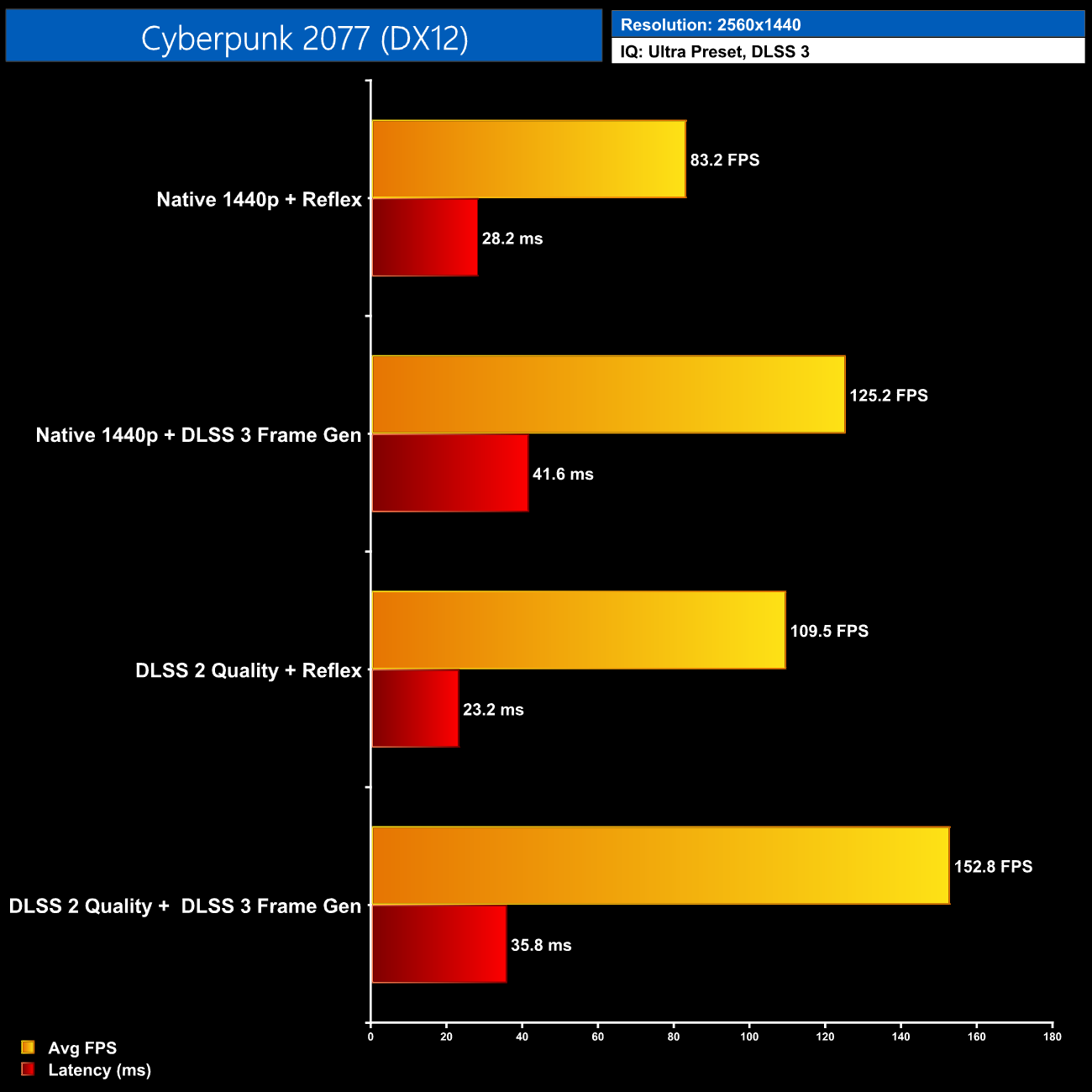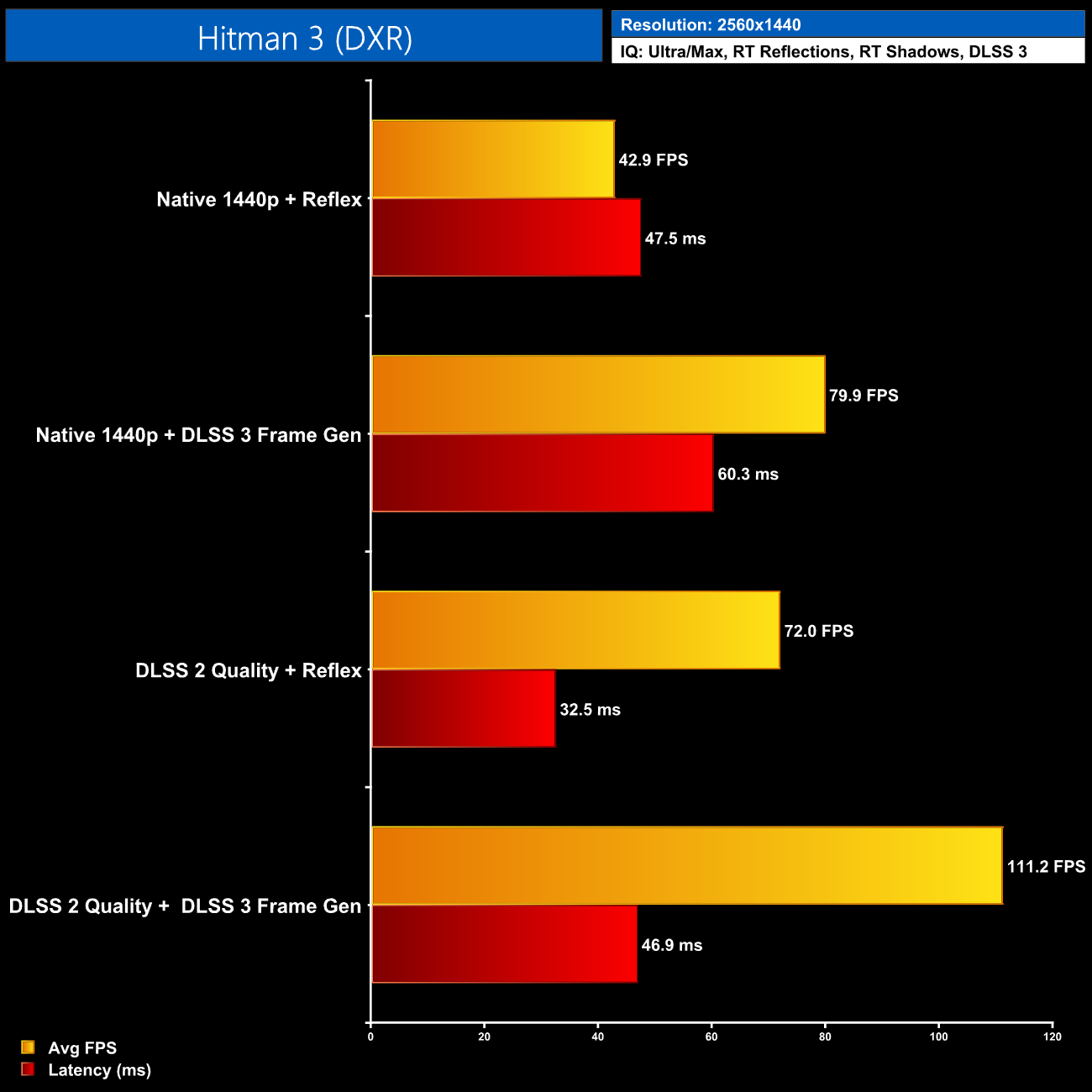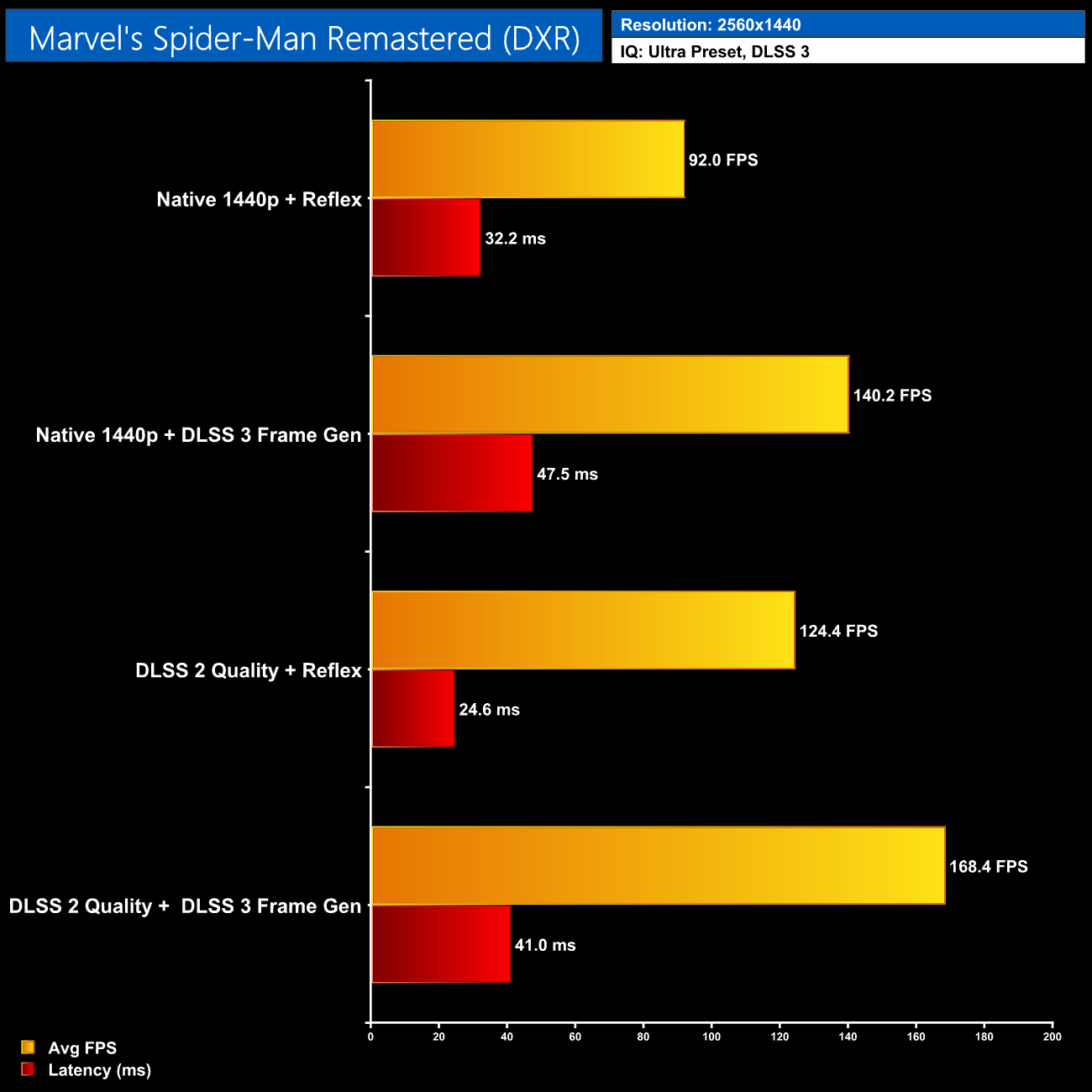Here we re-test three titles using both DLSS 2 and DLSS 3, to give you an idea of the performance on offer from Nvidia's upscaling technologies.
Cyberpunk 2077 is somewhat of a flagship game for Nvidia's RTX technologies, featuring pretty much every DLSS version available. DLSS 3 Frame Generation provides a 50% higher frame rate compared to native 1440p, though with latency rising from 28.2ms to 41.6ms. Adding in DLSS Super Resolution in the Quality mode boost frame rates further, to 152.8FPS, with latency at 35.8ms.
Hitman 3 sees a bigger net gain when using DLSS 3 Frame Generation, as the FPS almost doubles from 42.9FPS, up to 79.9FPS. Latency does increase, by 12.8ms, or 27%. Latency can be brought back down to native 1440p levels with DLSS 2 Super Resolution, and this increase frame rate to 111FPS.
Lastly, Marvel's Spider-Man Remastered delivers similar results. Average frame rate at native 1440p can be increased by 52% using Frame Generation, at a cost of 47% higher latency. Adding DLSS 2 Quality mode into the mix increase frame rate up to 168FPS, though latency is still higher than native 1440p with no DLSS.
 KitGuru KitGuru.net – Tech News | Hardware News | Hardware Reviews | IOS | Mobile | Gaming | Graphics Cards
KitGuru KitGuru.net – Tech News | Hardware News | Hardware Reviews | IOS | Mobile | Gaming | Graphics Cards





